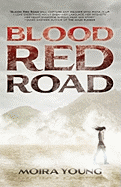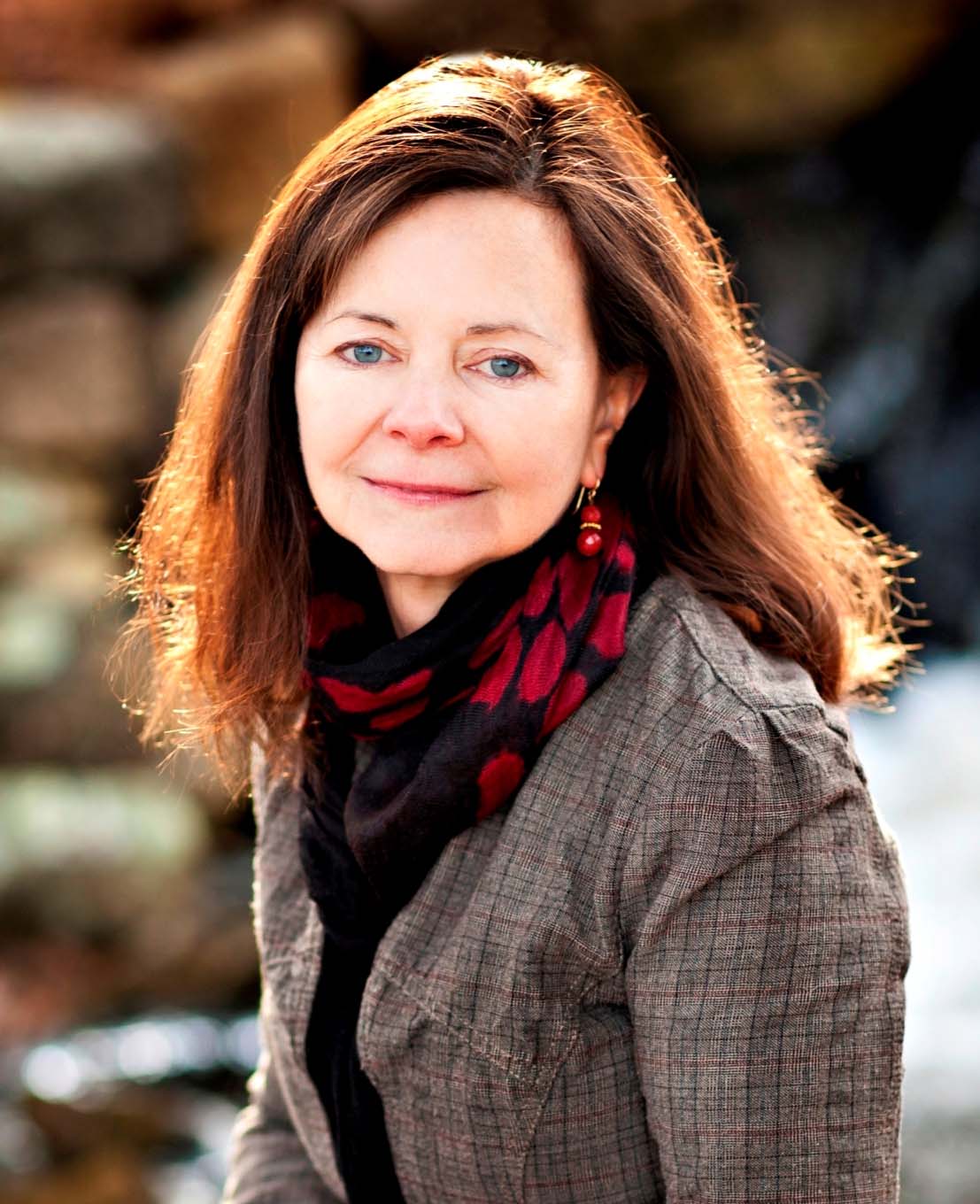 Geraldine Brooks is the author of People of the Book, March (winner of the 2006 Pulitzer Prize in Fiction) and Year of Wonders, plus the nonfiction works Nine
Parts of Desire and Foreign Correspondence. Her new novel, Caleb's Crossing (Viking, May 3, 2011; view
the trailer here), is based on a young man from Martha's
Vineyard who, in 1665, became the first Native American to graduate from
Harvard College. Born and raised in Australia, Brooks lives on Martha's Vineyard
with her husband, the author Tony Horwitz, and their two sons.
Geraldine Brooks is the author of People of the Book, March (winner of the 2006 Pulitzer Prize in Fiction) and Year of Wonders, plus the nonfiction works Nine
Parts of Desire and Foreign Correspondence. Her new novel, Caleb's Crossing (Viking, May 3, 2011; view
the trailer here), is based on a young man from Martha's
Vineyard who, in 1665, became the first Native American to graduate from
Harvard College. Born and raised in Australia, Brooks lives on Martha's Vineyard
with her husband, the author Tony Horwitz, and their two sons.
On your nightstand now:
The Thousand Autumns of Jakob de Zoet by David Mitchell. I am enjoying this--Mitchell has discovered exactly
the kind of historical backwater I love--a rich and alien setting, a distant
time and place. Yet his characters are familiar to us, their hearts are
recognizable. I love his use of what he terms "bygonese" to give a
sense of authenticity to antique language.
Favorite book when you were a child:
Scruffy by Paul Gallico. My father
was a proofreader, and he was proofing this book as a serial in a women's
magazine. He would bring the proofs home and read them to me at bedtime. It's a
wonderful novel, set during the dark days of World War Two, when a British solider
is charged with keeping alive the last of the apes on Gibraltar, because their
fate is linked in myth with that of Britain.
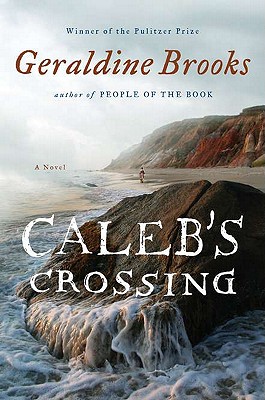 Your top five authors:
Your top five authors:
Tim Winton, Jane Austen,
Marilynne Robinson, Rose Tremaine, Mary Renault. It is hard to stop at five...
I could go on... and on....
Book you've faked reading:
The Tree of Man by Patrick
White. I was supposed to read it for my final year at high school but I couldn't
bear it. At the time I thought White was a pretentious old git. I suppose it's
time I tried him again.
Book you're an evangelist for:
The Bread of Angels by Stephanie
Saldana. I usually make fun of blurbs that call books luminous, but this one
really is. It is a mix of gorgeous writing, deep insight and page turning
story, by a young American in Syria on a Fulbright just as America goes to war
in Iraq and her Damascus neighborhood is flooded with refugees.
Book you've bought for the cover:
The Debt to Pleasure by John
Lanchester. I think it was the Australian edition--wonderful cut-out dust
jacket revealing a delicious-looking peach....
Book that changed your life:
A Pilgrim at Tinker Creek by
Annie Dillard. It opened my eyes to the natural world, which continues to prove
an abundant source of inspiration and reflection to me.
Favorite line from a book:
"By now she knew that this life,
despite all its pain, could be lived, that one must travel through it slowly;
passing from the sunset to the penetrating odor of the stalks; from the
infinite calm of the plain to the singing of a bird lost in the sky; yes, going
from the sky to that deep reflection of it that she felt within her own breast,
as an alert and living presence." --Andre Makine, Dreams of My Russian Summers; the "she"
is a French women, trapped in Siberia by the Russian Revolution. She believes
her husband has been killed in the war, and is out picking dill stalks on the
steppe. This moment is just before her husband returns to her.
Book you most want to read again for the first time:
Gilead by Marilynne Robinson. I
wanted to read it again as soon as I finished it.
Book Brahmin: Geraldine Brooks
Geraldine Brooks is the author of People of the Book, March (winner of the 2006 Pulitzer Prize in Fiction) and Year of Wonders, plus the nonfiction works Nine
Parts of Desire and Foreign Correspondence. Her new novel, Caleb's Crossing (Viking, May 3, 2011; view
the trailer here), is based on a young man from Martha's
Vineyard who, in 1665, became the first Native American to graduate from
Harvard College. Born and raised in Australia, she lives on Martha's Vineyard
with her husband, the author Tony Horwitz, and their two sons.
On your nightstand now:
The Thousand Autumns of Jakob de Zoet by David Mitchell. I am enjoying this--Mitchell has discovered exactly
the kind of historical backwater I love--a rich and alien setting, a distant
time and place. Yet his characters are familiar to us, their hearts are
recognizable. I love his use of what he terms "bygonese" to give a
sense of authenticity to antique language.
Favorite book when you were a child:
Scruffy by Paul Gallico. My father
was a proofreader, and he was proofing this book as a serial in a women's
magazine. He would bring the proofs home and read them to me at bedtime. It's a
wonderful novel, set during the dark days of World War Two, when a British solider
is charged with keeping alive the last of the apes on Gibralter, because their
fate is linked in myth with that of Britain.
Your top five authors:
Tim Winton, Jane Austen,
Marilynne Robinson, Rose Tremaine, Mary Renault. It is hard to stop at five...
I could go on... and on....
Book you've faked reading:
The Tree of Man by Patrick
White. I was supposed to read it for my final year at high school but I couldn't
bear it. At the time I thought White was a pretentious old git. I suppose it's
time I tried him again.
Book you're an evangelist for:
The Bread of Angels by Stephanie
Saldana. I usually make fun of blurbs that call books luminous, but this one
really is. It is a mix of gorgeous writing, deep insight and page turning
story, by a young American in Syria on a Fulbright just as America goes to war
in Iraq and her Damascus neighborhood is flooded with refugees.
Book you've bought for the cover:
The Debt to Pleasure by John
Lanchester. I think it was the Australian edition--wonderful cut-out dust
jacket revealing a delicious-looking peach....
Book that changed your life:
A Pilgrim at Tinker Creek by
Annie Dillard. It opened my eyes to the natural world, which continues to prove
an abundant source of inspiration and reflection to me.
Favorite line from a book:
"By now she knew that this life,
despite all its pain, could be lived, that one must travel through it slowly;
passing from the sunset to the penetrating odor of the stalks; from the
infinite calm of the plain to the singing of a bird lost in the sky; yes, going
from the sky to that deep reflection of it that she felt within her own breast,
as an alert and living presence." --Andre Makine, Dreams of My Russian Summers; the "she"
is a French women, trapped in Siberia by the Russian Revolution. She believes
her husband has been killed in the war, and is out picking dill stalks on the
steppe. This moment is just before her husband returns to her.
Book you most want to read again for the first time:
Gilead by Marilynne Robinson. I
wanted to read it again as soon as I finished it.
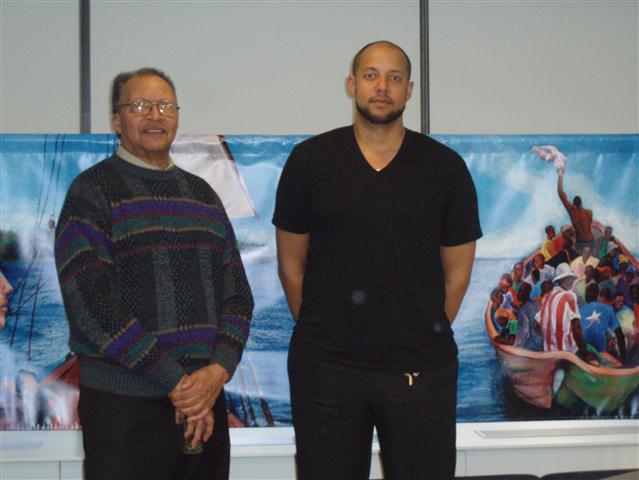







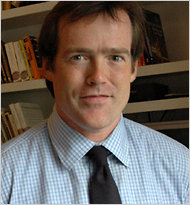 Scott Moyers, a former editor at Penguin Press who left in 2007 to run the Wylie Agency's New York office, is returning to Penguin as publisher, effective Monday. Current president and publisher Ann Godoff will become president and editor-in-chief. The return coincides with the imprint's decision to expand its frontlist by 50% during the next year.
Scott Moyers, a former editor at Penguin Press who left in 2007 to run the Wylie Agency's New York office, is returning to Penguin as publisher, effective Monday. Current president and publisher Ann Godoff will become president and editor-in-chief. The return coincides with the imprint's decision to expand its frontlist by 50% during the next year. 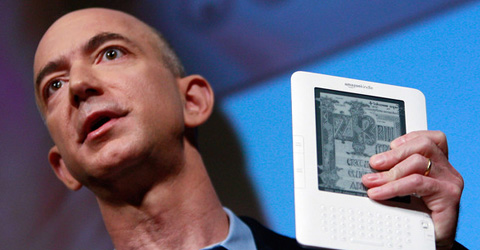 By 2012, the Kindle could be generating as much as $7.96 billion in total revenue for Amazon, according Caris & Co. analyst Sandeep Aggarwal, who said that "as the Kindle ecosystem expands, Kindle device users will not only continue buying more e-books but also subscriptions, accessories, hardware warranties, and eventually use Kindle’s wireless and computing capabilities for other data and content consumption (e.g. pictures, music, videos, e-mail, etc.),"
By 2012, the Kindle could be generating as much as $7.96 billion in total revenue for Amazon, according Caris & Co. analyst Sandeep Aggarwal, who said that "as the Kindle ecosystem expands, Kindle device users will not only continue buying more e-books but also subscriptions, accessories, hardware warranties, and eventually use Kindle’s wireless and computing capabilities for other data and content consumption (e.g. pictures, music, videos, e-mail, etc.),"  Amazon continues to announce expansion plans in the wake of online sales tax setbacks in South Carolina and Texas. The
Amazon continues to announce expansion plans in the wake of online sales tax setbacks in South Carolina and Texas. The 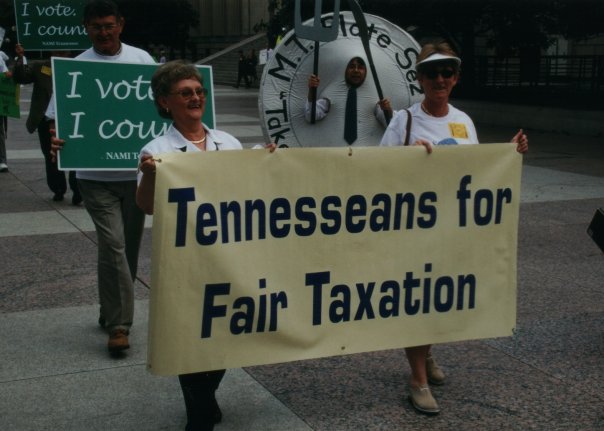 In Tennessee, where Amazon may be planning three additional fulfillment centers (
In Tennessee, where Amazon may be planning three additional fulfillment centers (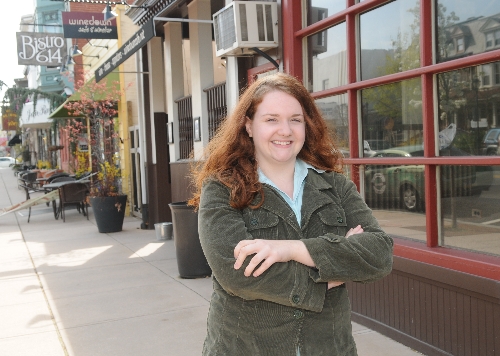 , West Reading, Pa., will host its grand opening May 15 with "a day of events including author signings, readings, maybe even some giveaways,"
, West Reading, Pa., will host its grand opening May 15 with "a day of events including author signings, readings, maybe even some giveaways," 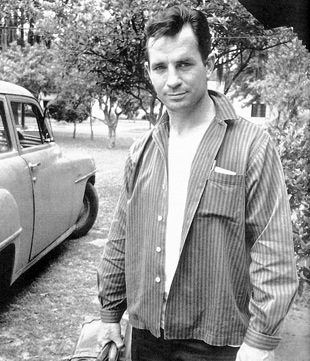 Jacket Copy visited
Jacket Copy visited  Author Emily St. John Mandel considered "
Author Emily St. John Mandel considered "
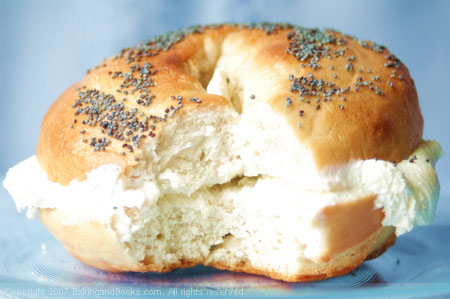 "You gotta eat more already!" These NYC institutions do Jewish
comfort food so right. Most of the dishes have their roots in Eastern Europe,
but today they seem to taste quintessentially New York. If you're eating in,
have the matzo-ball soup or the heaving pastrami on rye, usually served with a
crunchy pickle. In a hurry? Grab a bagel with cream cheese. Try the newly
relocated
"You gotta eat more already!" These NYC institutions do Jewish
comfort food so right. Most of the dishes have their roots in Eastern Europe,
but today they seem to taste quintessentially New York. If you're eating in,
have the matzo-ball soup or the heaving pastrami on rye, usually served with a
crunchy pickle. In a hurry? Grab a bagel with cream cheese. Try the newly
relocated 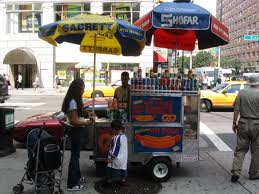 Hot Dogs
Hot Dogs More than 15,000 Chinese speakers call NYC home. Many hail from Fujian, so
try a classic Fujian dish like "Buddha jumps over the wall," which is
a variation on shark fin soup with sea cucumber, abalone and rice. If that's
not to your liking, there's plenty of options for bubble tea and kung po
chicken in the winding streets south of Canal that are home to New York's
Chinatown. Try
More than 15,000 Chinese speakers call NYC home. Many hail from Fujian, so
try a classic Fujian dish like "Buddha jumps over the wall," which is
a variation on shark fin soup with sea cucumber, abalone and rice. If that's
not to your liking, there's plenty of options for bubble tea and kung po
chicken in the winding streets south of Canal that are home to New York's
Chinatown. Try  The New York cheesecake began in 1921 with Leo Lindemann, whose Lindy's in
Midtown first served a cake that blended cream cheese and regular cream with a
splash of vanilla on a cookie crust. It became a sensation. Variations use
graham crackers for their crust, swirl in flavorings like mandarin or lemon or
replace cream cheese with cottage cheese. Today New York cheesecake appears not
only on menus across the city, but as a benchmark dessert around the world. Try
a slice at
The New York cheesecake began in 1921 with Leo Lindemann, whose Lindy's in
Midtown first served a cake that blended cream cheese and regular cream with a
splash of vanilla on a cookie crust. It became a sensation. Variations use
graham crackers for their crust, swirl in flavorings like mandarin or lemon or
replace cream cheese with cottage cheese. Today New York cheesecake appears not
only on menus across the city, but as a benchmark dessert around the world. Try
a slice at 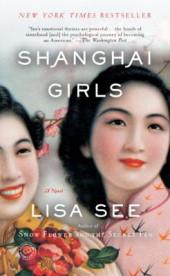 "I have been a fan of Lisa See since I read her novel Snow Flower and the Secret Fan and made it my December 2006 book pick.
"I have been a fan of Lisa See since I read her novel Snow Flower and the Secret Fan and made it my December 2006 book pick. In a
In a 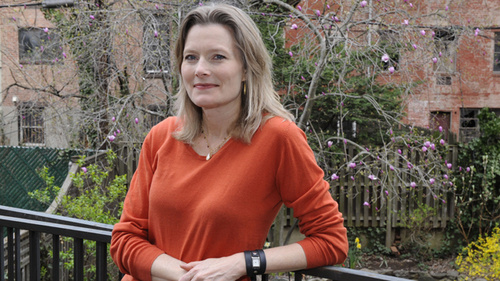 "I don't hate Twitter at all, but I can't seem to get
in the habit of it. I'm obviously a disaster of a tweeter," Jennifer Egan
lamented.
"I don't hate Twitter at all, but I can't seem to get
in the habit of it. I'm obviously a disaster of a tweeter," Jennifer Egan
lamented.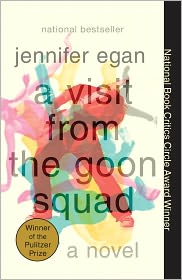 Back then, Egan didn't even know that PowerPoint was
software, didn't have it on her computer--and tried to concoct the chapter's
first draft by hand. "That was a monster," she said. "I was
literally drawing rectangles on yellow legal pads and thinking I was 'doing
PowerPoint.' Finally, I asked my sister, who is a consultant, to help me, and
got entranced by the jargon, by the names of the slides, like 'waterfall chart'
and 'bubble chart.' "
Back then, Egan didn't even know that PowerPoint was
software, didn't have it on her computer--and tried to concoct the chapter's
first draft by hand. "That was a monster," she said. "I was
literally drawing rectangles on yellow legal pads and thinking I was 'doing
PowerPoint.' Finally, I asked my sister, who is a consultant, to help me, and
got entranced by the jargon, by the names of the slides, like 'waterfall chart'
and 'bubble chart.' "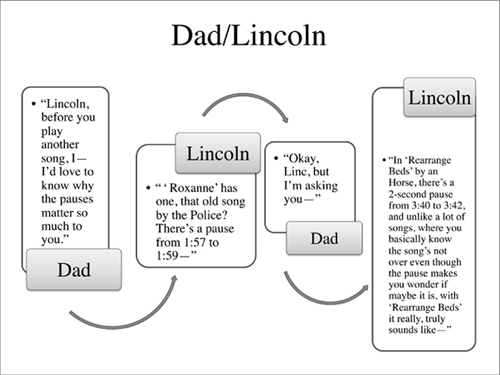 "Once I finally had the hang of it, I finally
understand why I had wanted to work in PowerPoint so much--it is a sort of
microcosm of the way Goon Squad works
as a whole, which is these vivid moments with big gaps in between, each one
different from all the others. The book is so much about pauses, and somehow
writing this chapter let me figure out those pauses."
"Once I finally had the hang of it, I finally
understand why I had wanted to work in PowerPoint so much--it is a sort of
microcosm of the way Goon Squad works
as a whole, which is these vivid moments with big gaps in between, each one
different from all the others. The book is so much about pauses, and somehow
writing this chapter let me figure out those pauses."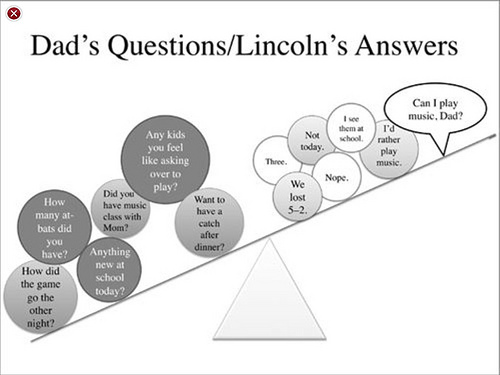 Egan continued: "It's the most openly sentimental
chapter in the book, which I was able to do only because the coldness of the
form let me go there. If it were written as conventional fiction, it would be
the schmaltziest bore anyone has ever looked at. It only works because of the
cold container. So it ends up being this very emotionally honest chapter, but
structurally, it feels like the heart of the book to me, and I think the book
almost didn't have a heart."
Egan continued: "It's the most openly sentimental
chapter in the book, which I was able to do only because the coldness of the
form let me go there. If it were written as conventional fiction, it would be
the schmaltziest bore anyone has ever looked at. It only works because of the
cold container. So it ends up being this very emotionally honest chapter, but
structurally, it feels like the heart of the book to me, and I think the book
almost didn't have a heart."
 Your top five authors:
Your top five authors: 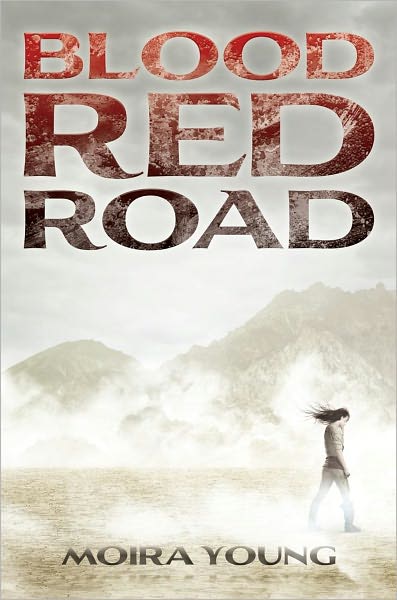 Moira Young's debut novel, the first of the Dustlands
series, unfolds in prose as spare as the wind- and sand-dominated landscape.
Saba and Lugh, 18, are twins, born on the dried-up remains of Silverlake on Midwinter
Day, "when the sun hangs low in the sky." Their mother died giving
birth to their now nine-year-old sister, Emmi. Their father reads their fates
in the stars, but he has no connection to the earth since the death of his
wife. It seems to Lugh that there's nothing written in the stars, and Pa might do
better to notice that there's too little to eat and no water supply except for the
dew they collect. Only when four men in long black robes and leather vests show
up on horseback (calling to mind the Four Horsemen of the Apocalypse) does Pa
seem to come alive. He tells Saba, "They're gonna need you, Saba. Lugh an
Emmi. An there'll be others too. Many others. Don't give in to fear. Be strong,
like I know you are. An never give up."
Moira Young's debut novel, the first of the Dustlands
series, unfolds in prose as spare as the wind- and sand-dominated landscape.
Saba and Lugh, 18, are twins, born on the dried-up remains of Silverlake on Midwinter
Day, "when the sun hangs low in the sky." Their mother died giving
birth to their now nine-year-old sister, Emmi. Their father reads their fates
in the stars, but he has no connection to the earth since the death of his
wife. It seems to Lugh that there's nothing written in the stars, and Pa might do
better to notice that there's too little to eat and no water supply except for the
dew they collect. Only when four men in long black robes and leather vests show
up on horseback (calling to mind the Four Horsemen of the Apocalypse) does Pa
seem to come alive. He tells Saba, "They're gonna need you, Saba. Lugh an
Emmi. An there'll be others too. Many others. Don't give in to fear. Be strong,
like I know you are. An never give up." 